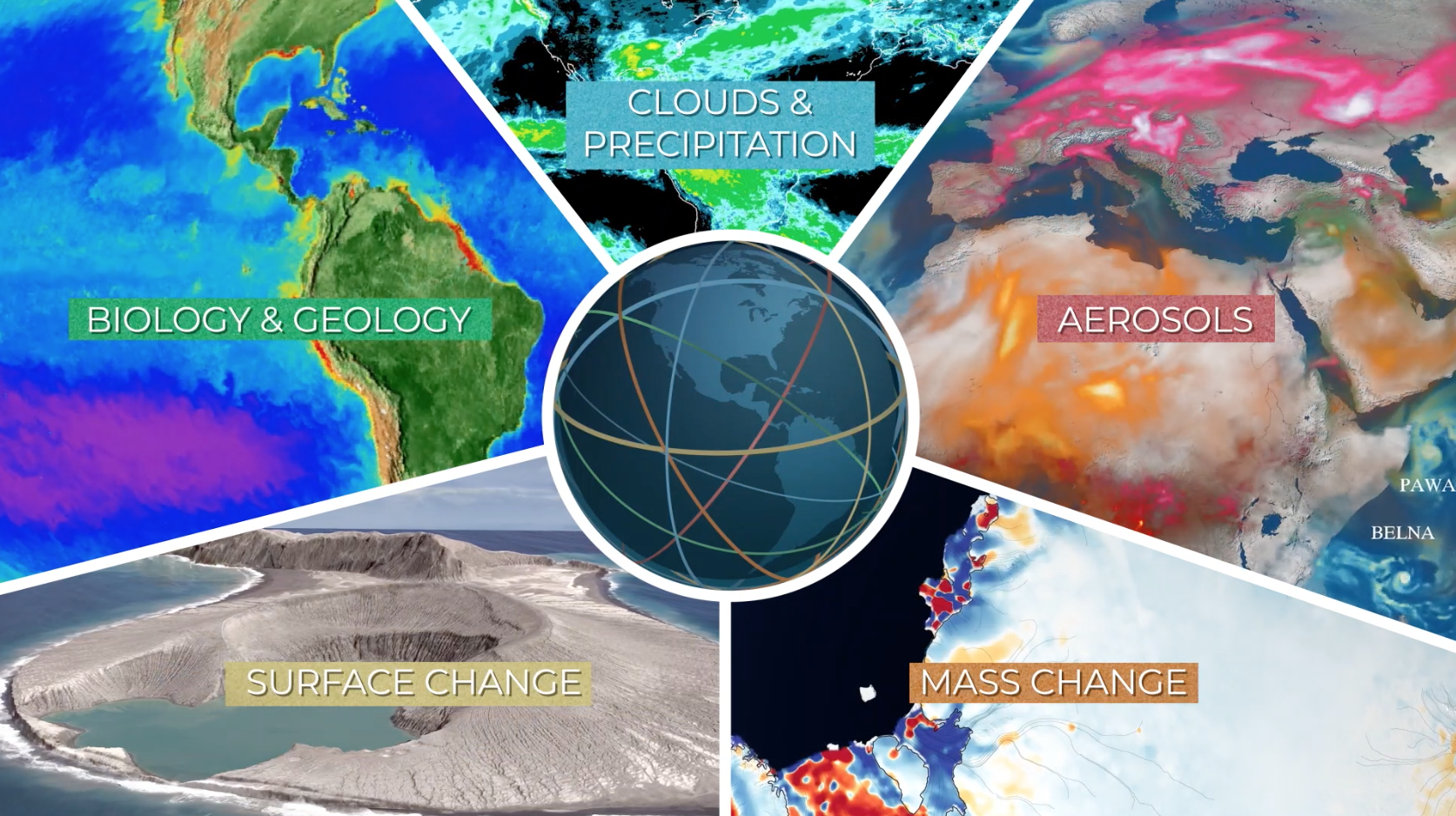GRACE Data Assimilation and GEOS-5 Forecasts
GRACE Surface Water, Root Zone, and Groundwater Storage, Okovango Delta Region
NASA researchers have developed new satellite-based, weekly global maps of soil moisture and groundwater wetness conditions and one to three-month U.S. forecasts of each product. While maps of current dry/wet conditions for the United States have been available since 2012, this is the first time they have been available globally.
Both the global maps and the U.S. forecasts use data from NASA and German Research Center for Geosciences’s Gravity Recovery and Climate Experiment Follow On (GRACE-FO) satellites, a pair of spacecraft that detect the movement of water on Earth based on variations of Earth’s gravity field. GRACE-FO succeeds the highly successful GRACE satellites, which ended their mission in 2017 after 15 years of operation. With the global expansion of the product, and the addition of U.S. forecasts, the GRACE-FO data are filling in key gaps for understanding the full picture of wet and dry conditions that can lead to drought.
The satellite-based observations of changes in water distribution are integrated with other data within a computer model that simulates the water and energy cycles. The model then produces, among other outputs, time-varying maps of the distribution of water at three depths: surface soil moisture, root zone soil moisture (roughly the top three feet of soil), and shallow groundwater. The maps have a resolution of 1/8th degree of latitude, or about 8.5 miles, providing continuous data on moisture and groundwater conditions across the landscape.
The new forecast product that projects dry and wet conditions 30, 60, and 90 days out for the lower 48 United States uses GRACE-FO data to help set the current conditions. Then the model runs forward in time using the Goddard Earth Observing System, Version 5 seasonal weather forecast model as input. The researchers found that including the GRACE-FO data made the resulting soil moisture and groundwater forecasts more accurate.
GRACE Surface Water, Root Zone, and Groundwater Storage, Australia
GRACE Surface Water, Root Zone, and Groundwater Storage, Australian Drought Dec 2019
GRACE Surface Water, Root Zone, and Groundwater Storage, Europe
GRACE Groundwater Storage, Whole Earth

2018 GRACE Data Assimilation
Four images in dropdown menu, one for each month.

2018 GEOSV2 Forecasts
Four images in dropdown menu, one for each month.

2019 GRACE Data Assimilation
Four images in dropdown menu, one for each month.

2019 GEOSV2 Forecasts
Four images in dropdown menu, one for each month.

Percentile Color Bar, All Water Storage

Percentile COlor Bar, Groundwater Storage Only
Credits
Please give credit for this item to:
NASA's Scientific Visualization Studio
-
Visualizer
- Trent L. Schindler (USRA)
-
Scientists
- Matthew Rodell (NASA/GSFC)
- Hiroko Kato Beaudoing (University of Maryland)
-
Producers
- Kathryn Mersmann (USRA)
- Ellen T. Gray (ADNET Systems, Inc.)
Release date
This page was originally published on Tuesday, March 31, 2020.
This page was last updated on Monday, March 10, 2025 at 12:09 AM EDT.
Datasets used
-
BMNG (Blue Marble: Next Generation) [Terra and Aqua: MODIS]
ID: 508Credit: The Blue Marble data is courtesy of Reto Stockli (NASA/GSFC).
This dataset can be found at: http://earthobservatory.nasa.gov/Newsroom/BlueMarble/
See all pages that use this dataset -
TWS Anomaly (Terrestrial Water Storage Anomaly) [Gravity Recovery and Climate Experiment (GRACE)]
ID: 889 -
GRACE Follow-On (Terrestrial Water Storage Anomaly) [Gravity Recovery and Climate Experiment (GRACE) Follow-On]
ID: 1078
Note: While we identify the data sets used on this page, we do not store any further details, nor the data sets themselves on our site.
![Music: Organic Machine by Bernhard Hering [GEMA] and Matthias Kruger [GEMA]Complete transcript available.](/vis/a010000/a013700/a013799/2020Temp.png)
![Music: Lines of Enquiry by Theo Golding [PRS]Complete transcript available.](/vis/a010000/a013500/a013574/Still.png)


![Music: "Solar Winds" by Ben Niblett [PRS] and Jon Cotton [PRS] courtesy of Universal Production Music.
Complete transcript available.](/vis/a010000/a013600/a013652/BushFire_Still_2.jpg)